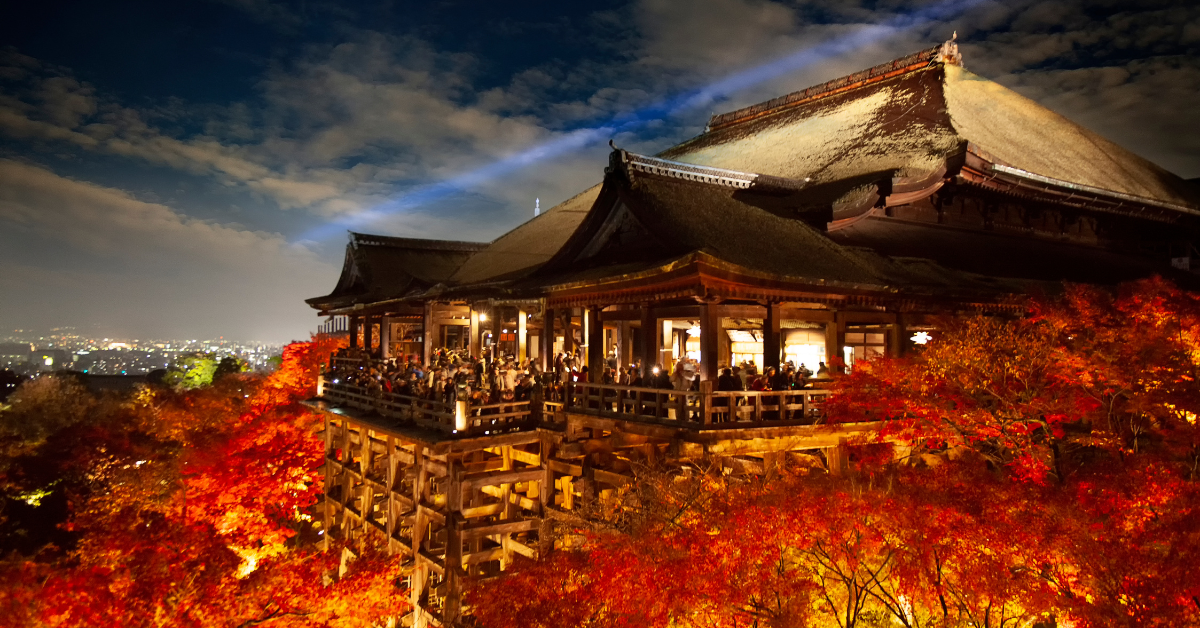Kyoto is regarded as one of the most culturally and historically significant cities in Japan. For domestic travelers, the city offers more than just sightseeing—it provides a deeply emotional and spiritual experience that resonates across all generations.
A City Where Traditional Culture and Modern Sensibilities Intertwine
Kyoto is unique in that traditional Japanese culture is deeply embedded in daily life. Practices like tea ceremony, flower arranging, Noh theater, and Kyoto cuisine are still widely experienced throughout the city. Meanwhile, the rise of contemporary art spaces and design hotels offers visitors a chance to see tradition merge with modern creativity. Areas like Gion and Pontocho preserve old townscapes, where the beauty of tradition and local life coexists in harmony. Seasonal shifts—cherry blossoms in spring and vibrant leaves in autumn—transform Kyoto’s appearance, giving repeat visitors new experiences each time. Additionally, wearing kimono while strolling through the city has become a popular, immersive experience for tourists.
How Japanese Tourists Value Kyoto
A Place of Cultural Stability and Spiritual Comfort
Kyoto is not merely a tourist spot; for many Japanese people, it is a spiritual sanctuary. Commonly chosen for school trips, family vacations, and special life events, Kyoto is widely recognized as a must-visit city. It is suitable for both first-time and repeat visitors. Kyoto offers historical sites, refined cuisine, and a harmonious blend of nature and urban scenery, making it a place where people can relax emotionally. Seasonal traditions—New Year shrine visits, summer fire festivals, and autumn foliage outings—are tightly woven into the city’s identity and enhance its cultural value.
Most Popular Tourist Spots According to Japanese Travelers
| Spot | Features | Popularity (out of 5) |
|---|---|---|
| Kiyomizu Temple | Scenic views from its famous wooden stage | 5 |
| Kinkakuji | Golden pavilion reflected in a peaceful pond | 4.9 |
| Fushimi Inari | Mystical paths of thousands of red torii gates | 4.8 |
| Arashiyama | Ravine scenery and scenic bamboo forests | 4.7 |
| Ginkakuji | Zen-inspired minimalism and moss gardens | 4.5 |
Types of Popular Activities by Travel Style
| Style | Popular Activities | Target Group |
|---|---|---|
| Traditional Culture | Tea ceremony, calligraphy, wagashi making | Families, Seniors |
| Photogenic Tourism | Kimono strolls, temple photo spots | Youth, Women |
| Outdoor Leisure | Cycling, river deck dining | All age groups |
| Culinary Culture | Kaiseki dining, matcha experiences | Couples, Friends |
How Tourists Rate Kyoto and Why They Return
Experiences Across Generations
Kyoto offers a wide range of activities to “see,” “touch,” and “feel.” Young people enjoy walking in kimono, café hopping, and discovering Instagram-worthy spots. Colorful attractions like Yasaka Koshindo’s “kukurizaru” or Arashiyama’s bamboo forest are especially popular. Seniors, meanwhile, value visiting temples, experiencing traditional crafts, or joining guided historical tours. The diversity in options allows travelers of all ages to enjoy Kyoto on their own terms. Lodging also varies widely, from traditional inns to modern hotels and machiya-style guesthouses.
High Return Rate Reflects Strong Satisfaction
Kyoto ranks high for repeat visitors according to surveys by Japan’s tourism authority. Visitors often return to explore what they missed on their previous trip or to see a different season. Programs that allow deeper immersion—such as artisan workshops or locally sourced dining—greatly increase satisfaction. Festivals and seasonal events like the Gion Matsuri also encourage repeat visits.
Popular Seasonal Events in Kyoto
| Season | Event | Highlights |
|---|---|---|
| Spring | Cherry Blossom Festival | Night viewing at Kamogawa, Hirano Shrine |
| Summer | Gion Festival | Parade floats and festive evening markets |
| Autumn | Fall Light-Ups | Night tours at Eikando and Kodaiji |
| Winter | Hatsumode | New Year’s visits at Yasaka and Fushimi |
Challenges and Future Outlook for Kyoto Tourism
Overcrowding and Local Living Issues
In recent years, a sharp rise in tourism has led to congestion and behavioral issues. Areas like Higashiyama and Gion have seen traffic jams and friction with residents. To maintain quality tourism, promoting etiquette and dispersing crowds has become necessary. Overconcentration in popular districts has also hindered development in lesser-known areas.
Regional Tourism Models to Expand Horizons
Kyoto is now promoting “regional dispersion tourism” to address these issues. For example, Ohara offers tranquil nature and temple cuisine, appealing to travelers seeking serenity. Uji, known for Byodoin Temple, is also gaining attention through its tea-themed workshops and cafés.
Recommended Outlying Areas of Kyoto
| Area | Features | Recommended Activities |
|---|---|---|
| Ohara | Rural tranquility and temple visits | Shojin cuisine, Sanzen-in tour |
| Uji | Blend of heritage and tea culture | Tea field tours, Byodoin exploration |
| Kurama | Mystical mountain and hot springs | Hike to Kurama-dera, hot spring soak |
| Yase | Access to Mount Hiei and nature | Hiking, cable car sightseeing |
Conclusion
Kyoto represents the pinnacle of Japanese culture, offering not only sightseeing but also deep emotional and spiritual experiences. The city’s strength lies in its ability to stay rooted in tradition while embracing innovation. Although it faces challenges like overcrowding, Kyoto continues to explore sustainable tourism models, ensuring it remains a place people want to return to again and again. For Japanese travelers, Kyoto will likely remain an unparalleled destination for years to come.






